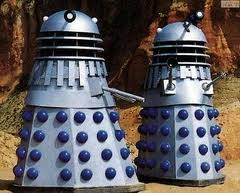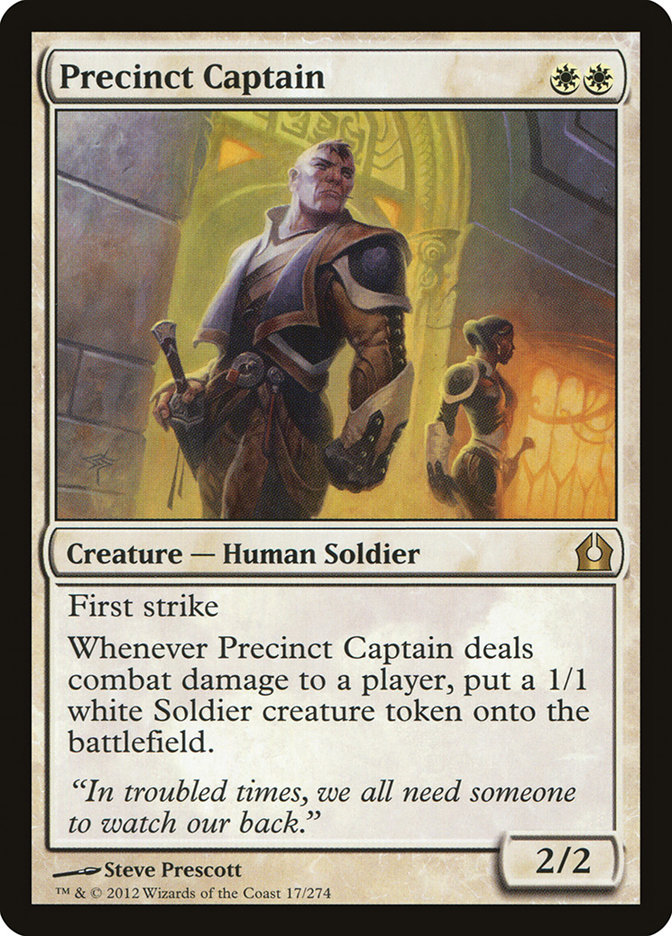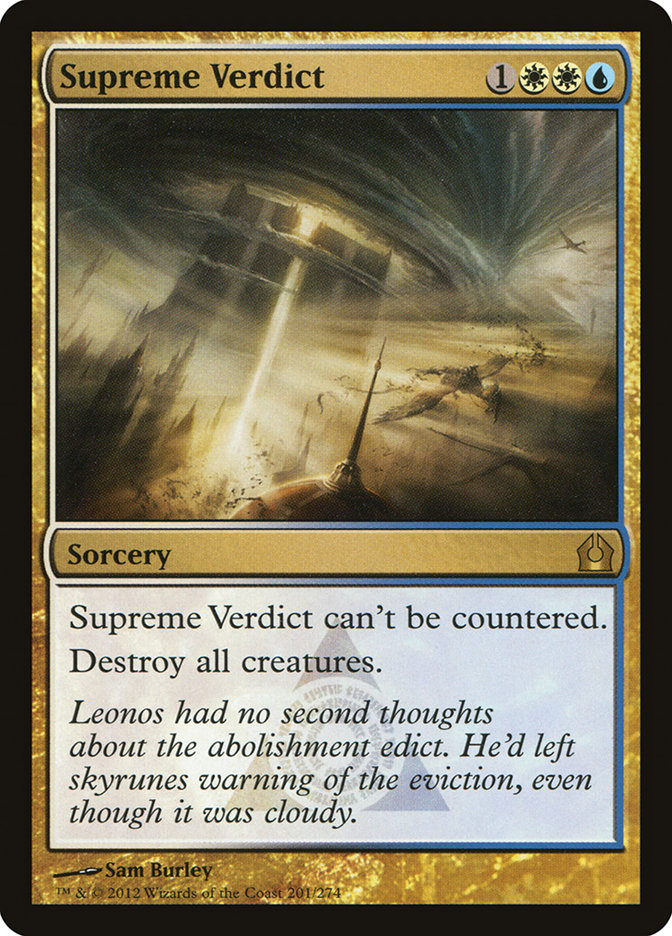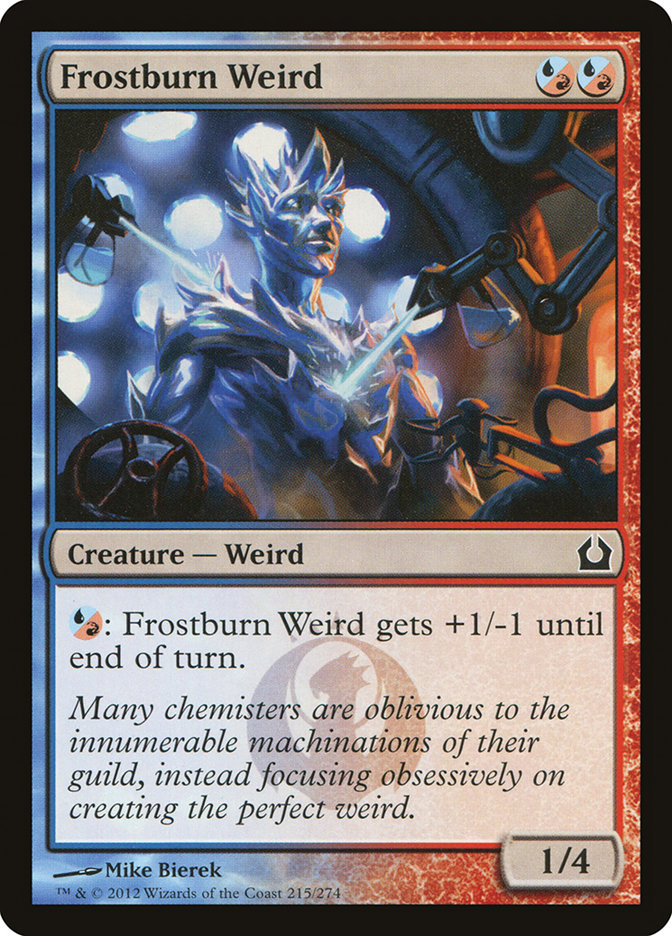"In a world full of Grizzly Bears, Nessian Courser stands the tallest."
Spoiler season is always great for getting the creative juices flowing. New cards mean the potential for new decks, which excites everyone that’s bored of the old Standard format. I’ve spent a bunch of time just thinking about what the new Standard metagame is going to look like. After days of brainstorming, I can safely say it won’t look like this.
Creatures (29)
- 4 Rakdos Cackler
- 4 Lifebane Zombie
- 4 Tormented Hero
- 1 Mogis's Marauder
- 4 Pain Seer
- 4 Herald of Torment
- 4 Gnarled Scarhide
- 4 Brain Maggot
Lands (22)
Spells (9)
Sideboard

Mono-Black Aggro looks like a decent deck on the surface. It has twelve one-drops to put the pressure on, multiple two-drops that can help set up the midgame, and a slew of evasive three-drops to keep attacking if the ground gets clogged. For removal the deck plays Thoughtseize and Hero’s Downfall, two cards that have proven to be metagame-defining spells since the release of Theros. Even with all of this, this deck is bad. Do you know why?
Sure, this card might not even see any play since we haven’t seen it in many decks for the last three months. Still, how in the hell can Mono-Black Aggro expect to win a game if this comes down on turn 2 while on the play? They can’t attack into it. Blocking doesn’t sound too profitable. Even if Precinct Captain takes a Hero’s Downfall to the knee, that doesn’t mean it doesn’t leave a Soldier in its wake.
The moral of this story is that Mono-Black Aggro can’t block.
How does this deck beat Supreme Verdict? Do you have to cross your fingers and pray that the first copy will be stripped from their hand with one of the eight discard spells and that they will never draw another copy? Hope that their life total will be so low by the midgame that Mutavault will be able to finish the job? As a newly conformed Sphinx’s Revelation player, I can safely say that Mutavault is good but not enough on its own, especially against a deck where I keep all my removal in.
The moral of this story is that Mono-Black Aggro doesn’t have enough reach to handily beat control decks. If the creatures end up in the graveyard, this deck has no way to topdeck anything that can deal damage immediately. This is extremely important in a world filled with Sphinx’s Revelation!
This is the same issue as Precinct Captain except this is a card that we see in Standard as well as a much scarier threat for Mono-Black Aggro. Not only does this card shut down the entire army, but it usually has reinforcements that can completely destroy other creature-based decks like Mizzium Mortars and Master of Waves.
The moral of this story is that Mono-Black Aggro doesn’t have a plan B, a way to play from behind, or any reach to close out games. It’s a streamlined aggressive deck that has no hope of making it out of spoiler season.
One of the most difficult things to do when building decks during spoiler season is trying to think about what the metagame will look like. Making decklists is sweet and all, but building decks takes a metagame to prepare for to truly understand what you will be up against. Just because a deck has twelve one-drops does not mean it is going to be good. Your opponents will play spells too, and these creatures need to be backed up by some great spells.
Creatures (26)
- 4 Diregraf Ghoul
- 4 Gravecrawler
- 4 Falkenrath Aristocrat
- 3 Hellrider
- 4 Geralf's Messenger
- 4 Knight of Infamy
- 3 Thundermaw Hellkite
Lands (24)
Spells (10)

This is what black aggressive decks looked like a couple years ago. They had the option to play twelve one-drops and chose not to. This was because twelve was too many since those creatures would sometimes be dealt with. Instead the deck made room for larger creatures and reach, ways to win the game without needing to get damage in over the red zone. These were alternative angles from which they could attack.
One of the most important lessons players forget about when a new set comes out is that every great deck has ways to attack from different angles, the ability to block aggressively or defensively, and the consistency to play from behind. Every flash in the pan deck that doesn’t do any of this was simply a metagame choice that was only good when nobody was prepared for it.
Creatures (31)
- 4 Champion of the Parish
- 4 Mayor of Avabruck
- 4 Lightning Mauler
- 4 Flinthoof Boar
- 4 Boros Elite
- 4 Burning-Tree Emissary
- 4 Experiment One
- 3 Frontline Medic
Lands (21)
Spells (8)
Sideboard

The most difficult thing about aggressive decks at the beginning of a format is that everyone will be prepared for them. Not only are they the most talked about decks, but they are also the ones that players will feel most comfortable taking to an event.
Level 0: Hyper Aggro
"I don’t know what I am going to play against so I should just kill people quickly."
You and everyone else! The first couple weeks of a new format are always filled with hyperaggressive strategies that do not have enough removal or late game to do anything but attack as often as possible.
Creatures (30)
- 4 Chandra's Phoenix
- 2 Gore-House Chainwalker
- 4 Rakdos Cackler
- 4 Burning-Tree Emissary
- 4 Firefist Striker
- 4 Foundry Street Denizen
- 4 Firedrinker Satyr
- 4 Mogis's Warhound
Lands (22)
Spells (8)

Hyperaggressive decks are not always bad since most other decks are not highly tuned and can be overrun by raw speed. Not only that, but players play Magic to have fun. I don’t care if you’re shaking your head in disagreement thinking "I want to win damn it!" We all do. We all want to win and do it with cards we like. Cards we gravitate toward. Cards we want to be good. No matter what level of skill you’re on, you will always want to play something that excites you, and sometimes it will not be as good as you hoped. That doesn’t mean you didn’t take that deck to a tournament and get destroyed first. These are the players that get exploited by Mono-Red Aggro decks like this, and those players come out of the woodwork on release weekend.
Level 1: Dedicated Creature Control
"I’m just going to kill everyone’s creatures and hope I don’t run into other control decks."
Creatures (1)
Planeswalkers (6)
Lands (27)
Spells (26)
- 2 Blinding Light
- 2 Last Breath
- 4 Divination
- 4 Azorius Charm
- 4 Supreme Verdict
- 4 Detention Sphere
- 4 Sphinx's Revelation
- 2 Dissolve
Sideboard

Creatures (12)
Planeswalkers (8)
Lands (25)
Spells (15)

These archetypes will always do well as long as they face linear aggressive decks. They’re just purely designed to crush anything that moves! I personally love this style of deck right when the first set of a block comes in and four sets rotate out. Everyone looks at the fastest decks, while I am in pure Dialect mode.

Often these strategies will be a little soft to the other control decks, and this unique tension is created. The best control deck in the room will be the one that has just enough countermagic to be advantaged in the "mirror" but not too much to get steamrolled by the aggressive decks. Whoever can find that perfect line will do the best over the weekend. I always lean more toward the killing things side of the spectrum due to the fact that I don’t think there will be many control decks in the late rounds of events.
Level 2: Midrange
"I’m going to beat both polarized strategies!"
Taking a deck that plays defense against the hyperaggressive decks while having enough elements to beat control decks works surprisingly well the first week. These decks usually consist of creatures that have defensive elements but at the same time can deal large chunks of damage when on the offensive.
Creatures (24)
- 4 Dryad Militant
- 4 Ghor-Clan Rampager
- 4 Boros Reckoner
- 4 Voice of Resurgence
- 4 Fleecemane Lion
- 3 Soldier of the Pantheon
- 1 Brimaz, King of Oreskos
Lands (22)
Spells (14)
Sideboard

Creatures (18)
- 4 Scavenging Ooze
- 2 Obzedat, Ghost Council
- 2 Archangel of Thune
- 2 Polukranos, World Eater
- 4 Sylvan Caryatid
- 4 Courser of Kruphix
Planeswalkers (3)
Lands (25)
Spells (14)

Even though these two decks are completely different in strategy, they are comparable in functionality. Against hyperaggressive strategies both of these decks will likely play defensively. Both have the capability to block, kill creatures, and get a strong board position in the mid to late game. Against control decks they both have enough manpower to get the job done. It might not be pretty, but these decks have the tools to come out on top.
During sideboarding both decks bring in a magnitude of powerful yet unique spells against control decks and streamlined answers when facing decks that are faster than them.
These are and always will be the three levels of Standard right after a new set comes out. Deciding what level to be on is the tricky part, but understanding that these are the archetypes to prepare for is step one! The only other level to be on is simply playing the best deck from last season. Even though new cards have come out, the best deck from last week was there for a reason. Instead of trying to get super cute and thinking that everything will change overnight, you can just play what you already know.
Level X: Last Week’s Boogeyman
"I guess they will just have to prove me wrong!"
Creatures (17)
Lands (25)
Spells (18)
Sideboard

Creatures (16)
Planeswalkers (1)
Lands (26)
Spells (17)

Mono-Black Devotion has proven to be very resilient ever since Theros was released. Many players (including myself) thought that this deck wouldn’t survive Born of the Gods. It just goes to show you that a deck that is not only consistent but also has multiple lines of attack, great card advantage, the potential of reach, and resistance to flooding will always be one of the best choices. This has been true for years now. This style of deck is good and should continue to be good for a great deal of time to come.
I didn’t write this article to argue against being creative. Brewing and inventing strategies has been my meal ticket in Standard for years now, but I do it in a very smart way. Every deck will have problems. That is why Magic is such a great game—it is self-correcting. No matter what you play, there is something that will be able to have an advantage over you. It’s just important to know which camp you belong to so that you can fully understand what your role is supposed to be.
Can It Play From Behind?
One of the most important things to understand is if your deck can stabilize from bad board positions. If the answer is no, then most of the removal spells in the deck should be turned into burn spells. That means that not only can they still be used to kill creatures, but now they can deal direct damage to an opponent so you can try to race people when things aren’t looking too good.
The high end then should be turned into creatures with haste and evasion. Just because a deck gets higher casting cost cards, does not mean that it will then be slower. It just means that you have to find ways to win the game when the board gets clogged up.
Creatures (30)
- 2 Rakdos Shred-Freak
- 4 Rakdos Cackler
- 4 Exava, Rakdos Blood Witch
- 4 Spike Jester
- 4 Tormented Hero
- 4 Mogis's Marauder
- 4 Gnarled Scarhide
- 4 Master of the Feast
Lands (22)
Spells (8)
Sideboard

Do You Have Multiple Angles Of Attack?
If the answer is yes to being able to stabilize, then the next question to ask is if you have multiple ways to attack. If the answer is no, then the deck should lean more toward the control spectrum. By playing more controlling cards and using finishers to end the game, you will have less awkward games where you just can’t get it over with. Too many smaller proactive spells will leave you losing to not only aggressive decks sometimes by not having enough removal spells but also to the control decks because they simply go over the top.
If You Can Do It All!
If your deck can block, attack on multiple fronts, and play from behind, you have a midrange deck. Embrace it and make sure your spells function in the way a midrange deck wants them to. This means you should cut any cards that only attack and trim down on pure finishers. Finding the right mix of proactive and reactive cards is half the battle, but the only way to get started is by understanding that the entire goal of the deck is become advantaged in the midgame. This means keeping the curve tight but not too low so that you have powerful spells to cast in the mid to late game.
I hope this will help you in your brewing endeavors. Please let me know if you have any questions or concerns about this theory. I will do my best to answer them in between rounds of the Prerelease!
Bonus: "Werewolves, Wake Up!"
My brother and father visited Roanoke this past weekend. It was the first time any family member has visited me since I moved here, so I was rather excited. I got to take them to all of my favorite restaurants and local landmarks and got to introduce them to all of my wonderful friends . . . and Todd. Most importantly, I got to introduce them to Werewolf!
I didn’t know if they would like it, but I warned them that if they were visiting me for vacation that they would have to do it my way. That means tons of BBQs, beer, and Werewolf (tough life, I know). Luckily they both loved the game, and we found ourselves playing Werewolf two straight nights. What surprised me however is that my dad was actually not that bad at the game!
I wouldn’t have really guessed it since he doesn’t participate in many gaming activities. Sure, he played poker during the hype years, but who didn’t? He just never got into gaming that much, so I thought he would have fun, but I didn’t know he would blow my damn mind! Here’s the Werewolf story of the century.
Four players were left in the game:
- Kali Anderson – Human
- Brian Bran-Duin – Human
- Nick Miller – Human
- Jess "Poprocks" Nelson – Werewolf
All day Brian and Nick tried to kill Pops. They both were convinced they were both human but weren’t sure since the first two victims in the game were the medic (my brother) and the seer (me). Both wanted nothing more than to lynch my dad, but Kali wanted to play with optimal gaming strategy. You see, if they kill someone during the day and guess wrong, the werewolf wins on the spot by killing someone at night and reaching parity. If they wait for the werewolf to kill someone, then it will be better odds of getting the wolf the following day in case all of their reads were bad. BBD and Nick kept putting Pops on the stand, and Kali kept letting him live. They went to sleep.
"Werewolves, wake up!"
My dad lifted his head.
"Werewolves, who would you like to kill?"
My dad shook his head side to side.
"Werewolves, who would you like to kill?!"
Again he shook his head but now more aggressively from side to side.
"Werewolves, go to sleep."
Seriously?! My dad learned this game the day before and was already pulling off the "no kill?"
Everyone woke up to find out that no one died, and my dad immediately said something along the lines of "way to go, medic!"
The group informed him that they were confident that my brother was the medic since he had frustratingly said it out loud when they lynched him on day one. "Oh, you can just not kill someone?" was my dad’s next response. Now the group started telling my father how a no kill works.
All suspicion was placed on Kali since the boys still believed in one another. My dad pointed out that Kali would have voted me down the earlier round if she was the wolf because she would have then in fact won but closed with "but you guys have played this more than me, and I really don’t know what is going on anymore."
Everyone was confused, and my dad was able to devour each and every one of them due to such a sick play and beautiful storyline to back it up.
Maybe my gaming abilities are hereditary?



